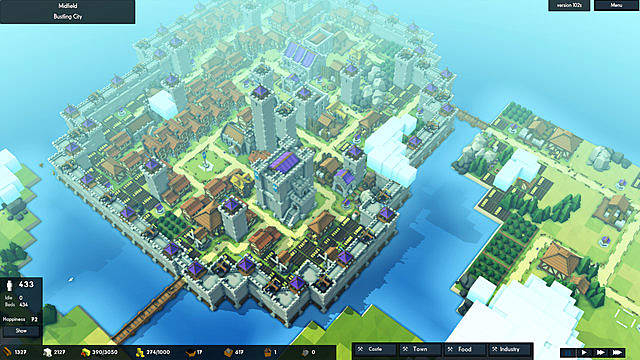
 Selected Proposal Buckminster Fuller Institute's Catalyst Program. W-all was finalist in the last round of the Roddenberry Fellowship out of 3000 entries W-all selected to receive funding from the MIT Sandbox Program Selected Proposal Sandbox Innovation Fund. Curator 3rd Biennial Exhibit of the MIT Leventhal Center for Advanced Urbanism. Finalist Fellowship Líderes Estudar 2020Īmong the 50 finalists out of 42.359 entries. Curator Brazilian Pavilion at the16th Venice Architecture Biennale. Assistant Curator 17th Venice Architecture Biennale. Young Professionals Board of BrazilFoundation The World as an Architectural Project shortlisted for category "Pensamiento y Critica" The World as an Architectural Project awarded in the category "Muestra de Investigación" Awarded XV Bienal Española de Arquitectura y Urbanism. For instance, Lindow Man, found near Manchester, England, appears to have been hit over the head, had his throat slit and was whipped with a rope made of animal sinew before being thrown into the watery bog. The mysterious bog bodies appear to have at least one thing in common: They died brutal deaths. Bog bodies are corpses that have been naturally mummified or preserved in peat bogs.Įxamples of Iron Age bog bodies include the Tollund Man, found in Denmark, and the Gallagh Man from Ireland. Hundreds of bog bodies dating back to the Iron Age have been discovered across Northern Europe. They grew crops and kept livestock, including goats, sheep, pigs, cows and geese. Inside the hill forts, families lived in simple, round houses made of mud and wood with thatched roofs. Walls and ditches surrounded the forts, and warriors defended hill forts against attacks by rival clans. People throughout much of Celtic Europe lived in hill forts during the Iron Age. Their legacy remains prominent in Ireland and Great Britain, where traces of their language and culture are still prominent today.Īerial view of entrance to Old Oswestry Hill Fort in the Welsh Marches near Oswestry in north west Shropshire during the Iron Age.Įnglish Heritage/Heritage Images/Getty Images The Celts migrated throughout Western Europe-including Britain, Ireland, France and Spain. It’s believed that Celtic culture started to evolve as early as 1200 B.C. They lived in small communities or clans and shared a similar language, religious beliefs, traditions and culture. The Celts were a collection of tribes with origins in central Europe.
Selected Proposal Buckminster Fuller Institute's Catalyst Program. W-all was finalist in the last round of the Roddenberry Fellowship out of 3000 entries W-all selected to receive funding from the MIT Sandbox Program Selected Proposal Sandbox Innovation Fund. Curator 3rd Biennial Exhibit of the MIT Leventhal Center for Advanced Urbanism. Finalist Fellowship Líderes Estudar 2020Īmong the 50 finalists out of 42.359 entries. Curator Brazilian Pavilion at the16th Venice Architecture Biennale. Assistant Curator 17th Venice Architecture Biennale. Young Professionals Board of BrazilFoundation The World as an Architectural Project shortlisted for category "Pensamiento y Critica" The World as an Architectural Project awarded in the category "Muestra de Investigación" Awarded XV Bienal Española de Arquitectura y Urbanism. For instance, Lindow Man, found near Manchester, England, appears to have been hit over the head, had his throat slit and was whipped with a rope made of animal sinew before being thrown into the watery bog. The mysterious bog bodies appear to have at least one thing in common: They died brutal deaths. Bog bodies are corpses that have been naturally mummified or preserved in peat bogs.Įxamples of Iron Age bog bodies include the Tollund Man, found in Denmark, and the Gallagh Man from Ireland. Hundreds of bog bodies dating back to the Iron Age have been discovered across Northern Europe. They grew crops and kept livestock, including goats, sheep, pigs, cows and geese. Inside the hill forts, families lived in simple, round houses made of mud and wood with thatched roofs. Walls and ditches surrounded the forts, and warriors defended hill forts against attacks by rival clans. People throughout much of Celtic Europe lived in hill forts during the Iron Age. Their legacy remains prominent in Ireland and Great Britain, where traces of their language and culture are still prominent today.Īerial view of entrance to Old Oswestry Hill Fort in the Welsh Marches near Oswestry in north west Shropshire during the Iron Age.Įnglish Heritage/Heritage Images/Getty Images The Celts migrated throughout Western Europe-including Britain, Ireland, France and Spain. It’s believed that Celtic culture started to evolve as early as 1200 B.C. They lived in small communities or clans and shared a similar language, religious beliefs, traditions and culture. The Celts were a collection of tribes with origins in central Europe. 
Iron tools made farming easier.Ĭelts lived across most of Europe during the Iron Age.

Life in Iron Age Europe was primarily rural and agricultural. The First Persian Empire, founded by Cyrus the Great around 550 B.C., became one of the largest empires in history, stretching from the Balkans of Eastern Europe to the Indus Valley in India. They may have been the first civilization to develop an armored cavalry in which horses and riders were completely covered in steel armor. The ancient Persians also fought on horseback. Steel weapons were sharper and stronger than earlier bronze or stone weapons. The Persians established their empire at a time after humans had learned to make steel. Why Ukraine Has Seen Centuries of Conflict The classical period also brought political reform and introduced the world to a new system of government known as demokratia, or “rule by the people.” Persian Empireĭuring the Iron Age in the Near East, nomadic pastoralists who raised sheep, goats and cattle on the Iranian plateau began to develop a state that would become known as Persia. Classical Greece was an era of cultural achievements including the Parthenon, Greek drama and philosophers including Socrates. Few artifacts or ruins remain from the period, which lasted roughly 300 years.īy the late Iron Age, the Greek economy had recovered and Greece had entered its “classical” period. Mycenaean Greece had been a literate society, but the Greeks of the early Iron Age left no written record, leading some scholars to believe they were illiterate. As urban societies splintered, people moved toward smaller, more pastoral groups focused on raising livestock. Major cities (with the exception of Athens) were abandoned. Greece entered a period of turmoil sometimes called the Greek Dark Ages.Īrchaeologists believe there may have been a period of famine in which Greece’s population dropped dramatically during this time.







 0 kommentar(er)
0 kommentar(er)
